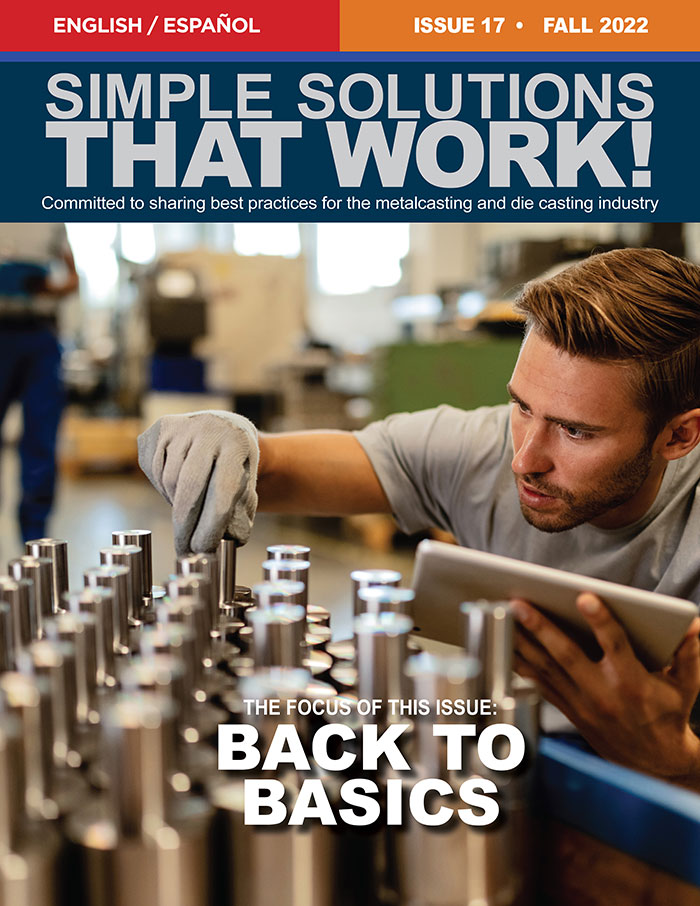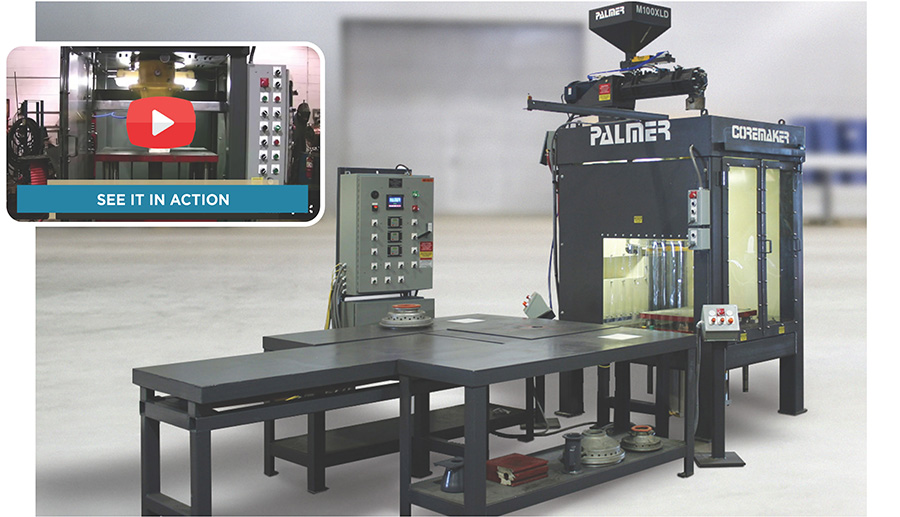Foundry & industrial processing Machinery EQUIPMENT & SYSTEMS
U.S. & Canada Call 1.800.457.5456
RFID Basics for Core & Mold Making
Home Articles RFID Basics for Core & Mold Making

Simple Solutions That Work!™, Volume 17, September. 2022
Written - Jack Palmer
Jack Palmer
President
Palmer Manufacturing & Supply, Inc.
ARTICLE TAKEAWAYS:
Many human errors in supply chain, inventory management, and production can be easily solved with RFID (radio frequency identification tags). RFID can accurately count and track your incoming boxes, raw materials, inventory, tools, and equipment as well as ensure your production machine settings are correct.
One of the significant benefits that foundries will appreciate is that RFID is not new. Over the years, RFID technology has only become better. All kinds of business are now using it for greater accuracy, which naturally increases the quality of their parts or services.
Think about how many times you see an RFID scanner these days for tracking management. Then start thinking about how you track inside your foundry and how many times an error is made in your processes, or the time it takes to correct an inventory recount, to finding your own expensive equipment—and then you will have found a place for RFID. But RFID tags ensure more than just tracking; in production they provide a guarantee that your machine settings and recipes are correct.
HOW RFID WORKS
RFID is a programmable (read/ write) identification system that stores and retrieves data, using radio frequency identification tags. The tags are fastened to your equipment, parts inventory or in production—to your mold and core boxes. The tags communicate wirelessly with the tag to the data. Your data can include mixer run time, resin percentages and ratios, additives, as well as compaction table vibration settings. The production data can also be incorporated into your companywide system.
RFID is portable – it can easily be used on a specific equipment or process. Or, it can be used throughout your entire facility. RFID is versatile and flexible making it ideal for all kinds of manufacturing facilities, large and small. And, you can easily start small with RFID and grow with it very cost effectively. RFID systems are designed to handle extreme temperatures, making them ideal for the foundry production floor.
The foundry floor is massively undergoing changes ranging from 3D printing to completely automated work cells, all with the same intent; to reduce waste and increase results. Many of these changes are quite costly and require significant worker training. RFID, in comparison is not as expensive nor difficult to deploy, and you can see the results on a smaller scale before you elect to go plant-wide. Of all of the ways you could reduce human errors and increase quality that is repeatable, RFID has to be one of the easiest to deploy, and see immediate results.
MOLD & CORE PRODUCTION
RFID in core making is one of the easiest places to add RFID and see immediate improvement in your castings, and reduction in costs due to reduced errors. The more core boxes a foundry has, the greater the benefits.
The process of adding a tag and attaching it to the bottom of each core box is easy. The tags (compliant with ISO 18000-3, ISO 15693, and ISO 14443 standards) each have a unique identification number that is read when the box is presented to the core machine. Then, during set-up the workers enters the setting for that particular core into the PLC. Once that setting is entered, it is saved permanently for that recipe.
To begin core making, the RFID interrogator built into the core maker bench, reads the tag’s number, and transmits that information to the PLC. Then, the computer retrieves the settings for that core. The worker presses one more button to begin the core making process, and the core box is moved into the core blower. The computer instructs the blower accordingly and injects sand and chemicals before purging the box.
For greater accuracy and savings, add RFID tags to your mold box to identify itself to the mixer. As the box flows past the RFID reader, the system reads the information on the tag and sends the information to the operating system.
Both the tag and the radio are two-way radios. The reader interfaces with the PLC to transfer the data obtained from the tag to allow the PLC to set the mixer and conveyor/carousel parameters. Recipe numbers and settings are entered into the tag via a touch-screen on the mixer control panel or another PLC. This means programming can take place at the production line if needed. While a tag can be reprogrammed at any time, password protection can easily be added to ensure recipes are not altered.
Especially in our current labor shortage market, the labor savings benefits of RFID are easily understood. However, RFID really manages your quality control system by ensuring the machine settings and the correct recipe are being used.
Foundries using RFID report that their increase in quality castings has also naturally reduced their defects/scrap, which has allowed them to compete with reduced prices. They also report that a RFID system is simply more productive. Regarding today’s worker shortage, RFID helps there as well. While you will reduce overall labor with an RFID system, the worker that operates the system will become a higher skilled person that is more likely to grow with you.
In summary, RFID tags can store a lot of information and are designed to be used in production, supply chain and inventory management. Eliminate human intervention that can result in errors by tagging your raw materials, parts, equipment, tools, and core and mold boxes to monitor real-time movement, for real-time savings.
Copyright © 2025 Palmer Manufacturing & Supply, Inc. | Terms and Conditions | Privacy Policy





